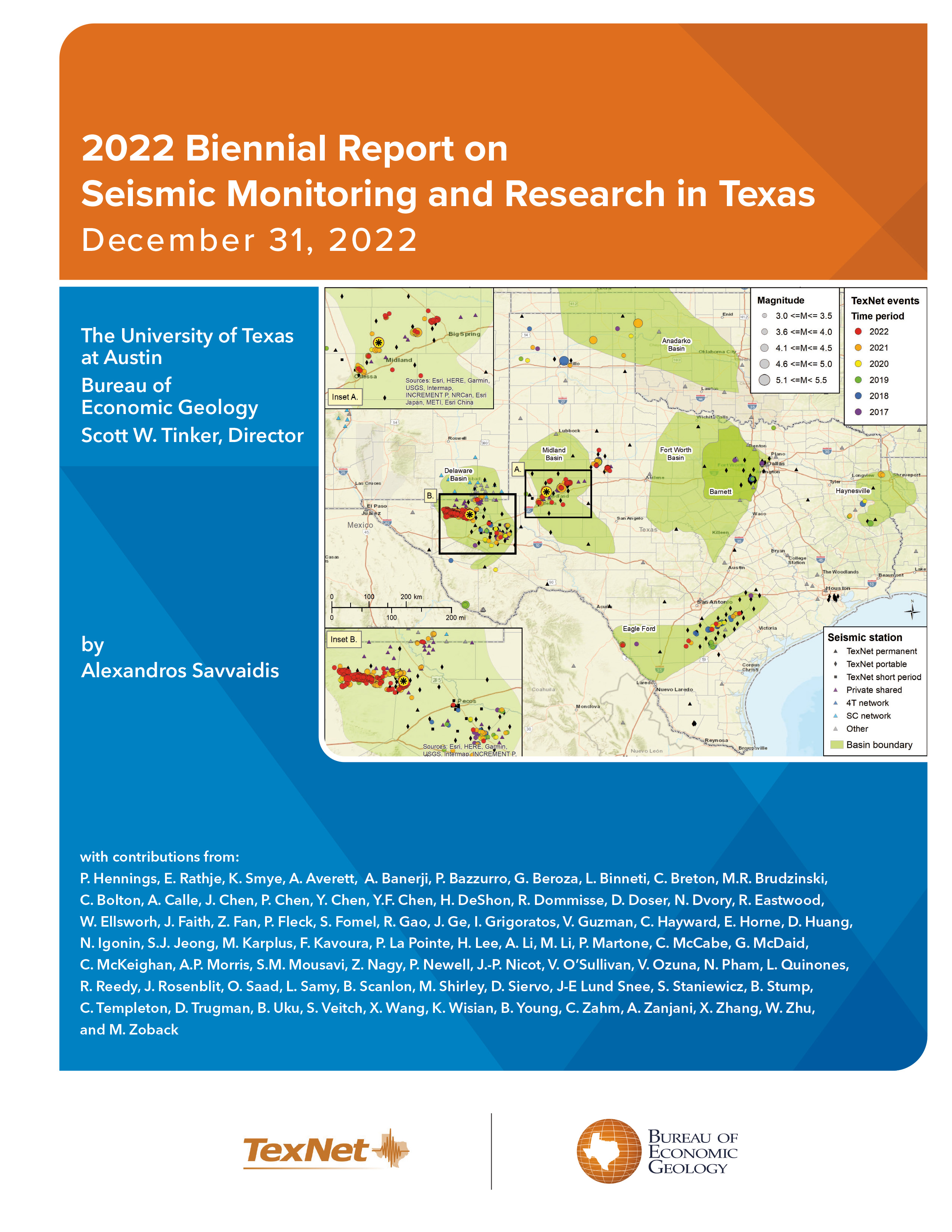At the link below the current release of the FSP software and related information and tutorials can be downloaded. This software this is provided at no cost and there is no warranty of its function or accuracy.
Background
Fault Slip Potential (FSP) is a free tool for deterministic and probabilistic screening of the rupture stability of existing faults in contact with a reservoir undergoing a pore pressure change, typically near injection wells. The tool can be used for screening of individual faults locally, or systems of faults regionally. The tool combines Mohr-Coulomb analysis with pore pressure modeling. FSP can use either an imported pressure model or semi-analytic pressure modeling of a uniform confined aquifer using constant, isotropic parameters and linear superposition of multiple wells. It can also be used to assess the rupture stability of faults in the natural state or as influenced by uniformly perturbed conditions. Faults are assumed to be in contact with the injection interval and out-of-zone effects and poroelasticity are not considered. FSP is best used in conjunction with a GIS tool such as ArcMap and a tutorial for that I/O process is provided.
FSP was developed and publicly released in 2017 through a partnership between ExxonMobil and the Stanford Center for Induced and Triggered Seismicity (https://scits.stanford.edu/). In 2023 the role of provision, maintenance and feature enhancement was transferred to The University of Texas Bureau of Economic Geology and the Center for Injection and Seismicity Research and the TexNet Seismological Network (https://www.beg.utexas.edu/texnet-cisr). For questions about software use please contact Lily Horne (lily.horne@beg.utexas.edu). For questions about software development please contact Alexandros Savvaidis (alexandros.savvaidis@beg.utexas.edu).
Download
Current Version: FSP 2.0, co-developed by Stanford and ExxonMobil. Information about changes to the software, new versions, and associated information will be posted here.
- To download the FSP software and associated files please click here. Be sure to follow the instructions in the readme.txt file from the downloaded FSP.zip. General user information is contained within FSP_2.0_documentation.pdf also included in the FSP.zip.
- To download FSP tutorials and an example analysis click here.
- To download a sample of publications using FSP click here.
- Please register as an FSP user in order to receive notice of updates and associated information by sending an email with your name, professional affiliation, and email address to lily.horne@beg.utexas.edu.
Select Publications Illustrating FSP Use
Walsh, F. R., and M. D. Zoback, 2016, Probabilistic assessment of potential fault slip related to injection-induced earthquakes: Application to north-central Oklahoma, USA: Geology, https://doi.org/10.1130/G38275.1
Lund Snee, J.-E., and M. D. Zoback, 2018, State of stress in the Permian Basin, Texas and New Mexico: Implications for induced seismicity: The Leading Edge, v. 37, no. 2, p. 127–134, https://library.seg.org/doi/10.1190/tle37020127.1
Hennings, P.H., Lund Snee, J-E., Osmond, J.L., DeShon, H.R., Dommisse, R., Horne, E.A., Lemons, C. and Zoback, M.D., 2019, Injection-Induced Seismicity and Fault Slip Potential in the Fort Worth Basin, Texas, Bulletin of the Seismological Society of America, https://doi.org/10.1785/0120190017
Hennings, P.H., Dvory, N., Horne, E.A., Li, P., Savvaidis, A., Zoback, M., 2021, Stability of the Fault Systems that Host Induced Earthquakes in the Delaware Basin of West Texas and Southeast New Mexico, The Seismic Record, https://doi.org/10.1785/0320210020
Dvory, N. Z.N.Z., Zoback, M. D.M.D., 2021. Assessing fault slip potential in a continuously varying stress field—Application in the Delaware Basin. In 55th US Rock Mechanics/Geomechanics Symposium. American Rock Mechanics Association, https://onepetro.org/ARMAUSRMS/proceedings-abstract/ARMA21/All-ARMA21/ARMA-2021-2025/468291

